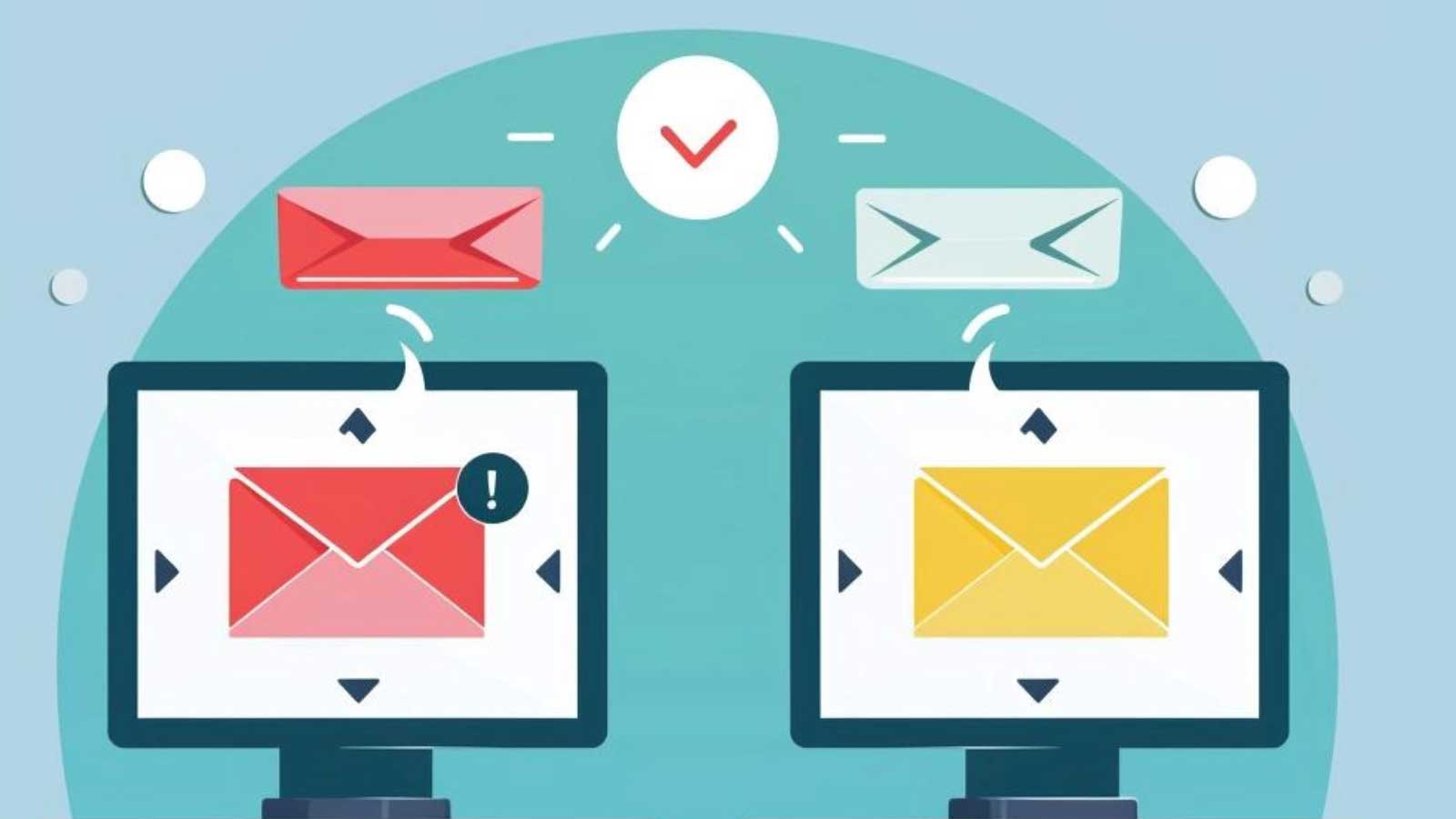Email marketing is a cornerstone digital marketing strategy that boosts conversions. Yet, many of you may not be leveraging it because you may overlook the metrics that make excellent email marketing campaigns.
As one of the most effective channels in driving conversions, email marketing is essential to every business across different industries. This channel boosts conversion rates up to 2.8% and 2.4% for the B2C and B2B industries, respectively. Currently, those are the highest conversion rates from organic channels for B2C and the second-highest in the B2B industry.
However, enjoying those conversion rates requires you to conduct email marketing correctly. That starts with knowing the metrics you need to track and optimize for.
This article will show you the exact metrics to track and boost your conversion from email marketing campaigns.
Why Measure Email Marketing Performance?
Measuring the effectiveness of email marketing campaigns is more than a strategic imperative in boosting your conversion rates. Though it is one of your key priorities, you can leverage your insights from your metrics and key performance indicators (KPIs) in many other ways. The most important of these is understanding your ideal customers better.
Email marketing achieves this because no other organic channel gets as close and personal with your customers. Through its metrics and KPIs, you become aware of what marketing and sales strategies align best with them.
It helps you answer critical questions about their purchasing behaviors like:
- Do flash sales help you convert better?
- What communication styles resonate best with them?
- When do your customers usually shop around or seek information about products and services?
All these considered, you can improve your strategies and use the insights to enhance your products and services. But while metrics are instrumental to your plan, they can also lead to inaccurate ones when you don’t know which ones matter the most to your success.
You’ll need to narrow your focus to some core metrics relevant to your goals to avoid the latter.
Core Metrics to Measure Email Marketing Success
Understanding and optimizing key email marketing metrics is crucial for achieving marketing and overarching business objectives. But that’s only one side of the story.
Another essential part is knowing which specific metrics will help you achieve those goals. These metrics are detailed below.
1. Delivery Rates
Before an email marketing campaign can convert, it must reach your target audience. Hence, delivery rates are a critical metric to watch out for. Delivery rates measure the percentage of emails that successfully land in the recipient’s inbox instead of being blocked or landing in the spam folder.
Maintaining a clean email list is essential to optimizing this metric. Some actions you can take to improve it are:
- Purge your mailing list regularly. Remove inactive subscribers and email addresses that consistently bounce from it. This will maintain a healthier sender reputation and improve your overall engagement rates per campaign.
- Comply with email regulations. Adhering to rules such as the CAN-SPAM Act in the U.S. or the GDPR for European audiences ensures that your emails end up in inboxes. If not, your emails will be sent to spam folders, immediately missing your target audiences. This can be done by creating consent to send email prompts and providing options to unsubscribe.
- You are implementing authentication protocols. These include the Sender Policy Framework (SPF), DomainKeys Identified Mail (DKIM), and Domain-based Message Authentication, Reporting, and Conformance (DMARC). These protocols validate your emails, making it less likely for email service providers to mark them as spam.
2. Open Rates
This metric reflects the number of recipients who open your emails. It serves as a direct measure of initial engagement and the effectiveness of your subject lines. Open rates are crucial because they indicate how compelling your campaigns are.
Some best practices for optimizing this metric include:
- A/B testing subject lines. Comparing different subject lines per email helps you work efficiently. By taking the extra step to test two different subject lines before sending them out, you ensure that you maximize your campaign and glean insights into communication styles that resonate with your audience.
- Ensure that your email preheaders. The summary text that follows the subject line in most email clients — is also engaging and informative. A compelling preheader works in tandem with your subject line to provide a snapshot of what the email contains, encouraging the recipient to open and read further.
- Personalize subject lines. You can achieve this simply by adding the recipient’s name or other relevant information to the subject.
For example, say that your audience recently clicked on a product currently sold at a 15% discount. You can send a follow-up campaign announcing that the 15% off sale is about to end to create urgency and compel them to continue the purchase.
This level of personalization improves engagement and increases the likelihood of conversions.
- Consider the timing of your emails. There are optimal times for sending emails, and they vary among audiences. In the same way, you can test subject lines and aim to conduct tests that help you determine when your audiences typically check their inboxes.
This insight benefits not only your engagements but has the added benefit of customer relationship management. Sending emails when your audience can and paying attention to them speaks of your brand’s attentiveness and consideration of their busy schedules.
3. Click-through Rates (CTR)
CTR indicates how many email recipients clicked on one or more links within an email, making it a crucial metric for evaluating the effectiveness of your email content and call-to-action (CTA). A high CTR signifies that your email engages recipients and compels them to take action.
To craft compelling CTAs that improve your CTRs, here are some actions to take:
- Using buttons instead of link texts. Consider using buttons instead of text links to make them more noticeable and attractive. The design of these buttons should be visually appealing and consistent with your brand’s aesthetic, ensuring they stand out without disrupting the overall design of the email.
It is also crucial to strategically place these buttons within the content; ideally, they should be positioned in places where they naturally draw the reader’s eye, such as immediately following a persuasive piece of content or an enticing offer.
- Consider the wording of your CTAs. The phrasing plays a critical role in driving clicks. Use action-oriented, urgent language that conveys the benefit of clicking. Phrases like “Shop Now,” “Get Started,” or “Learn More” clearly communicate what you want recipients to do and what they will gain from it.
- Segment your email list. Categorizing your recipients into categorized mailing lists allows you to tailor the types of emails recipients get based on their preferences, past behavior, or demographic information.
This automatically allows you to make your content more relevant and engaging to each group. This relevance boosts the likelihood of clicks as the content speaks directly to their interests or needs.
4. Conversion Rates
Conversion rates track how many click-throughs result in a desired action, such as a purchase or registration, directly linking email performance to business outcomes. Improving conversion rates is crucial to the ROI of your email marketing efforts and ensuring that your campaigns contribute positively to your business goals.
To enhance conversion rates, you must make sure that:
- Your landing pages for links are working. This is to provide a seamless user experience. Ensure the landing page loads quickly, displays well on all devices and features intuitive navigation that guides the user to take the next step effortlessly.
Aligning the message on the landing page closely with the call-to-action in the email is also critical. Any discrepancy between what the email promises and what the landing page delivers can create confusion and diminish trust, thereby deterring conversions.
- Optimize the aesthetics of your landing page. Use persuasive elements such as testimonials, guarantees, and clear benefits that reinforce the user’s decision to click through. The use of compelling visuals and a strong narrative can also increase the emotional engagement of the page, which is often a significant driver of conversion.
5. Bounce Rates
Bounce rates show the percentage of emails that could not be delivered to the recipient’s inbox. High bounce rates can be detrimental as they waste resources and damage your sender’s reputation, potentially affecting your email deliverability.
In addition to maintaining a clean and updated email list, here are other ways you can reduce bounce rates:
- Verify addresses on your mailing list. Verification tools can do this by checking email addresses’ validity in real time. These tools help identify and remove invalid or risky email addresses that could result in bounces.
- Implement a double opt-in process. With double opt-in, subscribers must confirm their email address by clicking a link in a confirmation email after initially subscribing. This extra step ensures that only valid email addresses are added to your mailing list and significantly reduces the likelihood of sending emails to incorrect or fake addresses.
6. Unsubscribe Rates
Unsubscribe rates measure the rate at which people opt out of your email list and are crucial for understanding subscriber satisfaction and the relevance of your content. High unsubscribe rates can indicate issues such as poor content alignment with subscriber interests, excessive email frequency, or a general decline in the perceived value of your communications.
Keeping these rates low is essential for maintaining a healthy, engaged subscriber base. To minimize unsubscribe rates, you must:
- Provide relevant and valuable content. This involves understanding your subscribers’ preferences and anticipating their needs based on engagement metrics and market trends. Maintaining an appropriate frequency of emails is also critical; too many emails can overwhelm subscribers, prompting them to unsubscribe, while too few may lead to diminished brand recall and engagement.
- Offer options to adjust email preferences. This allows subscribers to choose the types of emails they wish to receive and their frequency, giving them control over their communications without forcing them to unsubscribe completely. This approach improves subscriber satisfaction and provides valuable data on subscriber preferences, which can guide your content strategy.
7. Email Sharing or Forwarding Rates
Email sharing or forwarding rates offer insights into your emails’ viral potential. High rates indicate that recipients find your content valuable enough to share with others, effectively extending your reach beyond your current subscriber base. This metric is crucial for understanding how your content resonates with your audience and facilitates organic growth.
Here are some actions you can take to optimize for this:
- Include share buttons in your emails. These buttons should be prominently placed and designed to catch the eye, making it as simple as possible for recipients to share your content with just a few clicks.
- Encourage forwarding in your CTAs. Actively encourage readers to forward your emails to friends or colleagues who might find the content relevant. This can be done through direct calls to action, such as “Know someone who could use these tips? Forward this email to them!”
- Create high-value, informational content. Focus on creating content that addresses common pain points or offers substantial value, such as exclusive insights, comprehensive guides, or highly relevant tips. Content that people find helpful or enlightening is more likely to be shared, amplifying your reach and enhancing your brand’s credibility and authority in your industry.
9. Campaign Return on Investment
Campaign Return on Investment (ROI) is the most critical metric, as it quantifies the financial success of each email campaign. Calculating ROI involves comparing the revenue generated from a campaign against the costs of running it. This metric clearly shows how effectively your email marketing investments translate into profitable actions.
Below are some actions you can take to optimize your campaign ROI:
- Build on previous successful campaigns. Continuously optimizing your email content based on the performance of prior campaigns is another essential strategy for improving ROI. Analyze what has worked and hasn’t, and use this data to make informed decisions about future content.
- Refine your targeting strategies. More precise targeting ensures that your marketing messages reach those most likely to be influenced and take action, thereby increasing the efficiency of your spending.
- Make your CTAs engaging and persuasive. Clear CTAs guide recipients toward desired actions, effectively driving conversions and sales.
Benefits of a Data-Driven Approach to Email Marketing

Learning to interpret and act on the insights you glean from your email marketing campaigns enriches your strategies in various ways. Here are some specific ways you can better refine your strategy by understanding these email marketing metrics:
- Enhanced personalization. Data-driven insights allow for deeper personalization of email content. By understanding subscriber behaviors and preferences, businesses can tailor their messages to meet their audience’s specific needs and interests, increasing engagement and loyalty.
- Improved targeting. Analytics enable marketers to segment their audience based on various criteria such as demographics, engagement levels, and past purchasing behavior. This targeted approach ensures that each campaign reaches the most receptive audience, maximizing the impact of every email sent.
- Increased ROI. By continually refining email strategies based on performance metrics, businesses can improve the efficiency of their email marketing efforts. This reduces wastage by cutting down on ineffective practices and boosts the overall return on investment.
Measuring email marketing performance isn’t just about understanding past actions; it’s a forward-looking approach that continuously shapes and optimizes future campaigns. It provides a scientific basis for decisions that might otherwise rely on intuition, leading to more predictable outcomes and successful marketing efforts.
Final Thoughts
Tracking specific metrics and analytics is essential to understanding the effectiveness of your email marketing campaigns and making data-driven decisions to enhance performance.
By continually monitoring these metrics, you gain invaluable insights that help refine your strategies, optimize content, and improve overall engagement and ROI. Adapting your email marketing efforts based on these analytics is vital to stay relevant and competitive in your market.
If you want to deepen your understanding of email marketing analytics or need personalized assistance to optimize your strategies, don’t hesitate to contact The Ad Firm. Our team of experts is ready to help you maximize the effectiveness of your campaigns and achieve your marketing goals.









